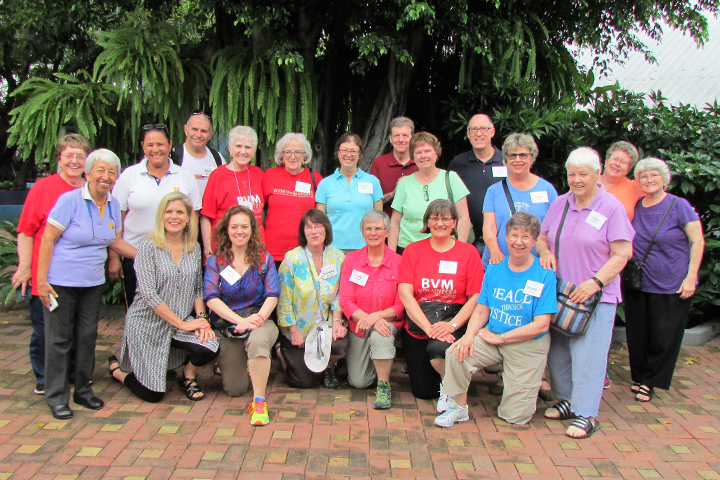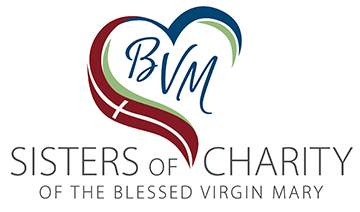BVM Ecuador Immersion Trip 2017

On April 19, a group of 17 adults traveled to Ecuador for a 10-day immersion trip sponsored by the Sisters of Charity, BVM of Dubuque, Iowa. Our group consisted of three men and 14 women (four of whom are BVM associates and three are BVMs). We all met in Miami for the flight to Guayaquil. Most of us had not met prior to this trip; as we waited for our flight, everyone engaged in positive conversation.
We stayed for two days in Guayaquil, Ecuador, and visited three important programs. Ann Credidio, BVM is responsible for Damien House, home to 26 women and men who have Hansen’s disease (leprosy). Sister Annie has made remarkable progress in caring for and offering hope to her patients. She is also securing their future by developing the staff of Damien House, who have benefitted from BVM Foundress Mary Frances Clarke Scholarships for education in healthcare, finance and administration. Our time with the patients at this clinic was rewarding and helped us understand the challenges faced by those with this disease.
We traveled to a nutrition center run by two women religious from a Marian Order. The center was located in the barrio (slum) of Duran. It had rained for six hours the day before, and the streets were flooded and filled with trash. Some areas were impassable. The poverty was magnified in such situations. When we finally arrived at the center, we learned that the services are provided primarily to women with children ages 1–5 years old. Most of the women have few skills to earn a living. Many have escaped abusive situations. The center helps them with childcare while they learn new skills, such as sewing, to help them survive on their own. This mission encounters many challenges, but there are signs of progress, especially in terms of building the women’s self-esteem.
We also spent a morning at Centro Educativo Nuevo Mundo, a school in Guayaquil where we met BVM Associate Sonya Rendón. This school educates tuition-paying students in the morning; children who cannot afford to pay come in the afternoon. Dedicated teachers staff this beautiful facility, offering a way out of poverty and injustice through education.
We then traveled to Quito for a week’s stay at the Centro Muchacho Trabajador (CMT). Quito is a vast metropolis spread throughout the valley and up the hills of the Andes Mountains. CMT has two different campuses. We stayed at Center #2, which is equipped to house groups of our size or larger. This Center, serves over 350 families. There are three meals per day, students and parents are educated, showers and medical care are available, and there is a safe place for recreation. We could hear the joyful noises from happy children throughout the day.
While in Quito, we had excursions to visit the artisans, an open-air market, historical downtown Quito, the Cathedral, Fe Y Alegría School, and the Middle of the World. Reflecting on our experiences, there are two events that stand out for me.
The first was our interaction at CMT with Padre Juan Halligan, SJ, Madre Miguel Conway, BVM, and Madre Cindy Sullivan, BVM. Padre Juan and Madre Miguel began this ministry in the mid-1960s. Under their guidance and vision, it has evolved through decades of change.
Juan had the dream and Miguel had the organizational/administrative skills to keep it in motion. Madre Cindy has been with them since the ’70s and is a vital part of the Center’s mission. What an amazing collaboration of gifts and charisms! Rooted in prayer and love, they represent a living sign of the Spirit at work. These three especially seem to live in the tradition of Dorothy Day, who co-founded the U.S. Catholic Worker Movement. They observe, listen, and live with the needy.
“We must talk about poverty because people insulated by their own comfort lose sight of it.”—Dorothy Day.
The second event was our visit to the homes of three of the families served by CMT. Most of the families live in one room—with one overhead light, a stove to cook on, running water in the house or nearby, often no door (just a piece of material to cover the entry), a dirt floor, and minimal belongs. This was not simple living. It was poverty. Their lives are very difficult and full of struggle to meet basic human needs. The contrast with our American lifestyle was striking. Most of our group pondered this and will continue to ponder this for a long time.
“Attention is the rarest and purest form of generosity.”—Simone Weil.
This trip allowed us to pay attention to the needs we encountered. The distractions of our American life were removed, even if only for 10 days. This allowed us to be attentive to the beautiful people we encountered and their stories changed our hearts.
There are a number of ways to change your heart. If you have a chance to make this type of an adventure, do it. Your life will be enriched in many wonderful ways.
If you would like to learn to more about the Ecuador BVM Immersion Trip, contact: bvmoutreach@bvmcong.org.
—Ann R. Wertz
Post date 5.9.2017
